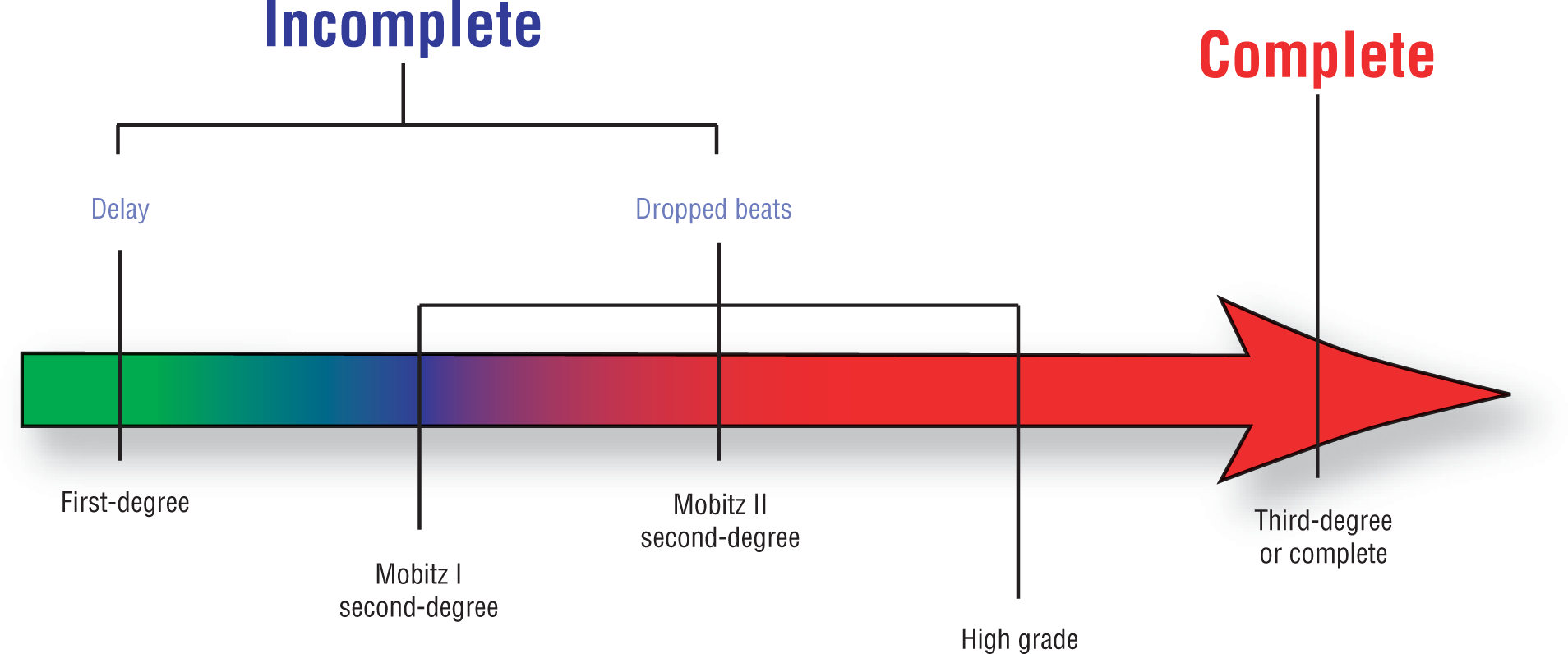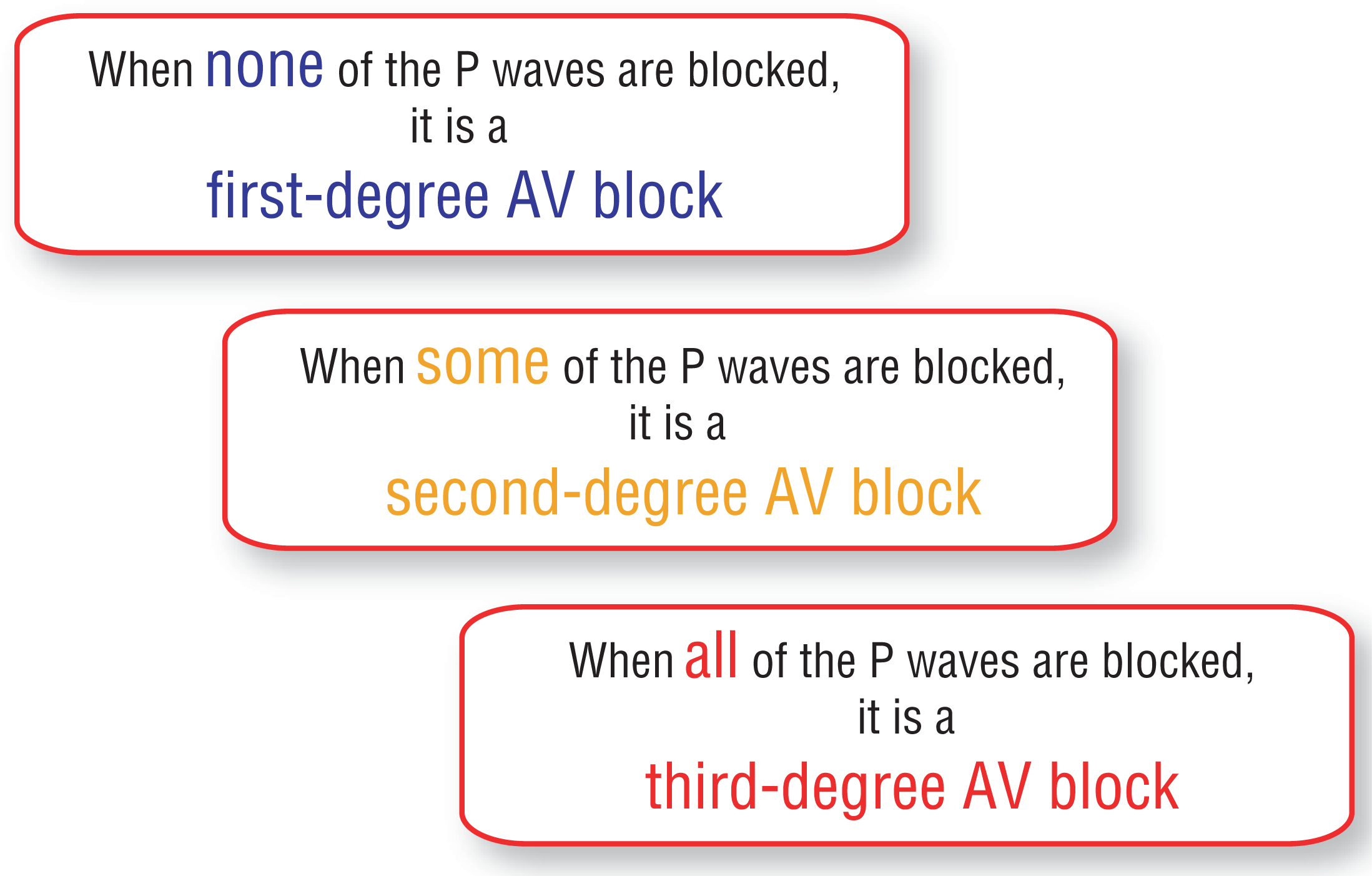
Figure 28-1 The AV blocks. The red part of the arrow signifies the potentially lethal nature of these types of AV blocks.
© Jones & Bartlett Learning.
DescriptionMany of you may be wondering why the atrioventricular (AV) blocks are being placed in the miscellaneous arrhythmias section of this text instead of in the section on junctional rhythms. Before we get started, we’d like to state that the AV blocks are not really arrhythmias in and of themselves; instead, they are obstruction to conduction through the electrical conduction system. As such, they may not necessarily be the primary arrhythmia, but rather represent a secondary or a protective process. For example, we typically say a rhythm is a sinus tachycardia with a ____-degree AV block.
In very simple terms, an AV block is formed when conduction of the supraventricular impulses, through the AV node or the ventricular portion of the electrical conduction system, is either partially or completely blocked from reaching the ventricles (Figure 28-1). When the impulses are simply delayed, it is called a first-degree AV block. These ECGs typically show a prolonged PR interval of greater than 0.20 seconds. When the impulses are intermittently blocked from reaching the ventricles completely, causing some QRS complexes to be dropped, it is called a second-degree AV block. There are two main types of second-degree AV block: Mobitz I and Mobitz II. There are also two minor variations of second-degree AV block: 2:1 (or untypable) and high-grade (or advanced). Lastly, when there is no actual communication at all between the atria and the ventricles, we call it a complete or third-degree AV block.

Figure 28-1 The AV blocks. The red part of the arrow signifies the potentially lethal nature of these types of AV blocks.
© Jones & Bartlett Learning.
DescriptionIn this chapter, we will cover the diagnostic criteria used to identify each one of these AV blocks and provide various strips of each type for your review. His bundle electrocardiography has broadened our understanding of the AV blocks and their sites of origin. However, the concepts involved in these findings are often complex and fall well above the scope of a text on arrhythmia recognition. As such, we will be concentrating on identifying the various blocks from actual rhythm strips and will provide electrophysiologic information only when appropriate. Figure 28-2 shows an easy way to remember how to identify blocks by using P waves. If readers are interested in further information on this topic, see the list of references provided at the end of this text.

Figure 28-2 An easy way to remember the blocked P waves and AV blocks.
© Jones & Bartlett Learning.
Description